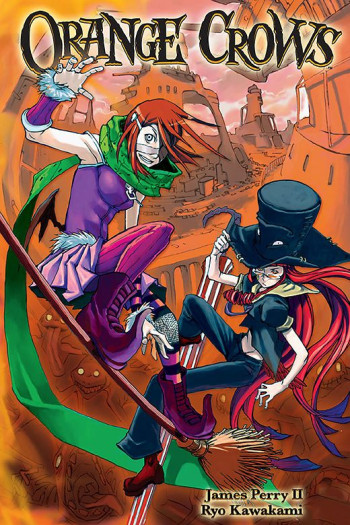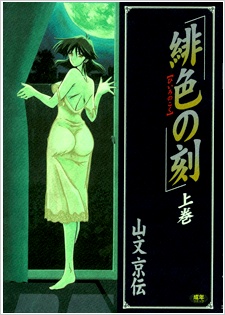In Olivia Kerr's captivating novel, In the Hands of a Highland Bandit, readers are thrust into a world of turmoil, resilience, and unexpected romance set against the rugged backdrop of the Scottish Highlands. The story revolves around Greta Baines, a young woman who has endured unimaginable loss and hardship, and Finn Crawford, a fearsome bandit leader with a troubled past. This tale is not just a simple love story; it is a profound exploration of redemption, the power of compassion, and the struggle between duty and desire.
The narrative begins with a poignant introduction to Greta, who has been left to fend for herself after the brutal murder of her parents by bandits. Her determination to protect the village children from the same fate that befell her family showcases her bravery and selflessness. This initial setup effectively establishes Greta as a strong and relatable protagonist, one who embodies the spirit of survival and the desire to shield others from pain. Kerr’s portrayal of Greta is nuanced; she is not merely a damsel in distress but a woman of action, willing to confront danger head-on.
Finn Crawford, on the other hand, is a complex character whose journey from villain to potential hero is both compelling and believable. Initially presented as a ruthless bandit, Finn’s character is gradually revealed to be shaped by a traumatic past that haunts him. His decision to save Greta from a burning hut is a pivotal moment in the story, marking the beginning of a transformative relationship between the two characters. This act of heroism not only serves to deepen the plot but also introduces a glimmer of hope that Finn can change, challenging the reader’s perceptions of morality and redemption.
The themes of In the Hands of a Highland Bandit are rich and multifaceted. At its core, the novel explores the idea of love as a transformative force. Greta’s unwavering belief in Finn’s potential for goodness serves as a catalyst for his character development. As their relationship evolves, the reader witnesses Finn grappling with his identity as a bandit and the possibility of a different life—one filled with love and purpose. This theme resonates deeply, reminding us that love can inspire change even in the most hardened of hearts.
Another significant theme is the impact of trauma and loss. Both Greta and Finn are shaped by their past experiences, and Kerr skillfully navigates their emotional landscapes. Greta’s grief over her parents’ death is palpable, and her determination to prevent others from experiencing similar pain drives her actions throughout the story. Finn’s backstory, revealed in layers, adds depth to his character and elicits empathy from the reader. Kerr’s ability to portray the complexities of trauma makes the characters’ journeys all the more relatable and poignant.
The pacing of the novel is well-structured, balancing moments of tension with quieter, introspective scenes. Kerr’s writing style is both engaging and evocative, painting vivid imagery of the Scottish landscape while immersing the reader in the emotional turmoil of the characters. The dialogue is sharp and authentic, capturing the essence of the time period while also allowing for moments of levity that enhance the overall reading experience.
As the story unfolds, the tension between Greta and Finn escalates, leading to a series of conflicts that test their growing bond. The author does an excellent job of creating a sense of urgency, particularly as Greta grapples with the moral implications of her feelings for a man who represents everything she has fought against. This internal struggle adds layers to the narrative, making it not just a romance but a profound exploration of choice and consequence.
Moreover, the supporting characters enrich the story, providing additional perspectives on the central themes. The village children, who Greta strives to protect, symbolize innocence and the hope for a better future. Their presence serves as a constant reminder of what is at stake, heightening the emotional stakes for both Greta and Finn. The dynamics within Finn’s band of outlaws also add complexity, showcasing the varying motivations and loyalties that exist within their ranks.
In comparison to other historical romances, such as those by authors like Julie Garwood or Judith McNaught, Kerr’s work stands out for its emphasis on character growth and emotional depth. While many historical romances focus heavily on the romantic elements, In the Hands of a Highland Bandit prioritizes the characters’ journeys toward healing and redemption, making it a more profound reading experience. The interplay between love and personal transformation is reminiscent of the works of authors like Tessa Dare, who also explore the complexities of relationships against historical backdrops.
In conclusion, Olivia Kerr’s In the Hands of a Highland Bandit is a beautifully crafted tale that weaves together themes of love, redemption, and the enduring impact of trauma. With well-developed characters and a gripping plot, the novel invites readers to reflect on the power of compassion and the possibility of change. It is a story that lingers long after the final page is turned, leaving readers with a sense of hope and the belief that even the most damaged souls can find their way back to love.
For those interested in a historical romance that goes beyond the surface, this novel is a must-read. It not only entertains but also challenges the reader to consider the complexities of human relationships and the transformative power of love.
























Reviews 0
Post a Reviews: